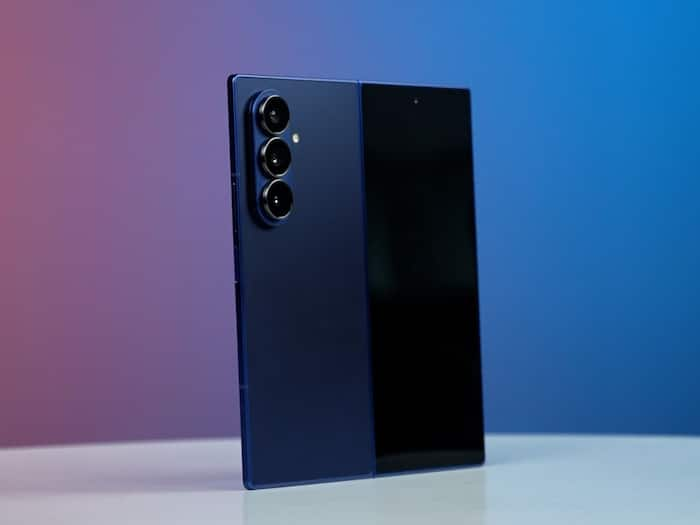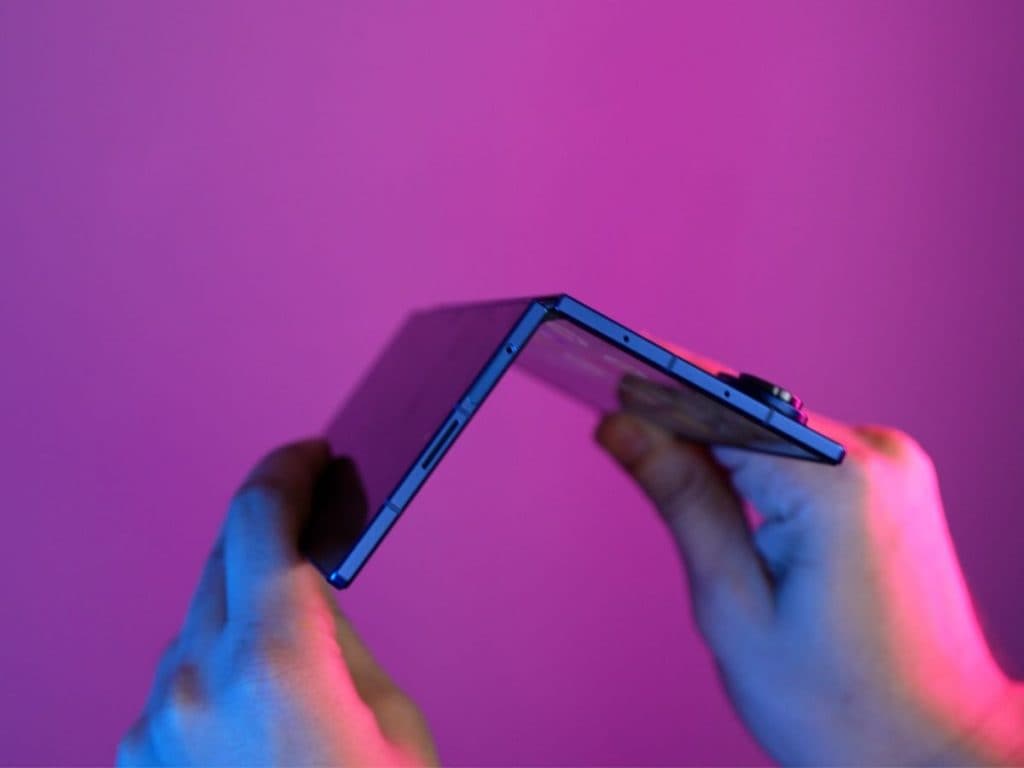
Written By Dinesh Sharma
Published By: Dinesh Sharma | Published: Jul 29, 2025, 03:06 PM (IST)

I’ve been using smartphones for over a decade now, watching them evolve from chunky, plastic handsets into sleek, glass slabs of power. Yet through all that innovation—faster chips, sharper cameras, brighter screens—the form factor stayed largely unchanged. Then came Samsung with its foldables, shaking up what a phone could be. The Galaxy Z Fold 7 feels like the culmination of years of refinement. And after spending over two weeks with it, I can confidently say: this isn’t just a gimmick anymore. It’s the most complete foldable I’ve used to date. Let me break it down for you.
From the moment I unboxed the Z Fold 7, I knew this was something special. It feels more like a finely crafted piece of tech art than a typical phone. Samsung has shaved the folded thickness down to just 8.9mm and trimmed the weight to around 215 grams. That’s a noticeable improvement over the Fold 6, and it makes a real difference in daily handling, especially when you’re using it one-handed in folded mode.
Samsung’s choice of materials reflects a clear intention: luxury meets durability. The front is clad in Corning Gorilla Glass Ceramic 2, while the back uses Gorilla Glass Victus 2. The sides are reinforced with Armor Aluminum, and the hinge—now called “Armor FlexHinge”—feels smoother and sturdier, with much less wobble than previous generations. I could tell the hinge was built to last—it closes tighter and with more confidence, and that annoying fold crease in the middle? It’s barely noticeable unless you’re really hunting for it.
And then there’s the IP48 rating, which is huge. It may not survive a dip in the pool, but it’s now better equipped to handle splashes, dust, and daily wear—something that used to be a major concern with earlier foldables.
In terms of aesthetics, the new Mint, Jet Black, Blue Shadow, and Silver Shadow options look absolutely stunning in person. The Blue Shadow version I tested had this soft matte finish that resisted fingerprints better than expected. Samsung’s attention to the tiniest design cues—be it the chamfered edges or the reduced hinge gap—is apparent everywhere.
Let’s get one thing straight: Samsung makes some of the best screens in the business, and the Fold 7 is the best example of that. It starts with the 6.5-inch cover display—a tall, narrow Dynamic AMOLED 2X panel with a silky 120Hz refresh rate. Unlike earlier foldables, this cover screen is no longer a compromise. I found myself replying to messages, browsing Instagram, and navigating maps without needing to unfold the device.
But open it up, and you’re met with the real star of the show: an 8-inch AMOLED HDR10+ panel that’s nothing short of breathtaking. This year’s display is 11% larger and peaks at a blinding 2,600 nits—bright enough to use comfortably in direct sunlight. Watching HDR content or editing photos on this canvas feels more immersive than ever.
The crease? Still there, technically. But Samsung has done a stellar job minimizing it to the point where it fades into the background during daily use. Touch response is excellent, scrolling feels fluid, and the edge-to-edge screen with reduced bezels hits a 90% screen-to-body ratio. It’s closer than ever to the “all-screen dream.”
One caveat: there’s no S Pen support this time. As someone who occasionally sketches or jots down notes on the go, I missed the stylus. Samsung’s decision was likely a trade-off for the thinner, more rugged design, but creatives might find this a small setback.
Under the hood, the Galaxy Z Fold 7 is an absolute beast. It runs on the new Snapdragon 8 Elite for Galaxy – a custom-tuned version of Qualcomm’s latest chip, and it shows. Whether I was juggling Google Docs, playing BGMI, or switching between video calls and photo editing, everything felt buttery smooth.
My review unit had 16GB of RAM and 512GB of storage, which handled multitasking without a hiccup. Samsung’s vapor chamber cooling system also kept things impressively cool even during prolonged gaming sessions. No overheating, no performance throttling.
The Adreno 830 GPU handles graphics like a champ. I tested out titles like Asphalt 9, Genshin Impact, and Fortnite at max settings, and they ran flawlessly. Frame rates were consistent, load times were short, and gameplay was immersive on that massive inner screen.
What surprised me most, however, was the integration of AI. From intelligent app suggestions to real-time energy optimisation, Samsung’s AI layer works quietly in the background to smooth out the user experience. The phone adapts to your habits—if you always open Gmail and YouTube in split-screen at 9 AM, it’ll offer that layout proactively.
Foldables have historically taken a back seat when it comes to camera prowess, but not this time. The Fold 7 borrows heavily from the Galaxy S25 Ultra, and the results are impressive.
Photos come out crisp, detailed, and vibrant. The main 200MP sensor captures incredible detail, even in low light. I snapped a few pictures during my New York Trip to US. The telephoto lens also surprised me—I got sharp images up to 10x zoom, and even at 30x digital, it was usable for casual photography.
The ultrawide is excellent for landscapes and group shots, maintaining minimal distortion at the edges. Video, meanwhile, goes all the way up to 8K at 30fps and 4K at 60fps with Super Steady mode, which smooths out bumps and shakes without needing a gimbal.
Samsung’s AI-based image processing has come a long way. Portrait mode, edge detection, and skin tones have all improved. I also liked the auto-suggestion mode that offered tips like “try ultra-wide” or “increase brightness” based on lighting and composition.
Samsung’s One UI 8, based on Android 16, feels like a mature and thoughtful evolution. It’s clear that years of foldable feedback have shaped this OS. From the Taskbar 2.0 at the bottom of the inner screen to the seamless app continuity, the entire UI feels like it was made for folding screens, not retrofitted.
Samsung’s commitment to 7 years of OS and security updates is huge. It provides the kind of long-term support that few Android OEMs match, giving users real confidence in their investment.
AI shows up again here—this time in smart replies, auto-summarisation of notes, live language translations, and even in real-time transcription during video calls. It all works well and feels genuinely helpful without being gimmicky.
Now for the caveat: battery life is good, not great. With a 4,400mAh dual-cell battery, I typically got through a full day with moderate usage—some media consumption, light editing, and about 2 hours of screen-on time on the main display.
If you’re a power user, constantly switching between apps and maxing out the brightness, expect to hit the charger by evening. Fortunately, Samsung’s power optimisation helps extend juice intelligently, especially if you enable AI power modes.
Charging speeds:
While fast charging has improved across the industry, Samsung still lags behind rivals like OnePlus and Xiaomi in this department. Expect about 60-70 minutes for a full charge.

Let’s be honest—foldables still carry a stigma of fragility. But the Fold 7 is changing that perception. In two weeks of daily use—bags, drops, dusty coffee tables—it held up brilliantly. That IP48 rating means it’s better shielded from the real world than any foldable before it.
I also noticed a new screen texture this year. It’s slightly matte, which helps reduce smudges and glare. You still get some fingerprints, sure, but it feels less slippery than earlier versions.
The hinge is where you really feel the engineering magic. I opened and closed it over a hundred times without a single creak or misalignment. This isn’t just a foldable phone anymore—it’s a foldable phone you can trust.
If you value productivity, love cutting-edge tech, and can justify the price, the Samsung Galaxy Z Fold 7 is unquestionably the best foldable phone available. It’s not just a smartphone, it’s an experience. It’s pricey, yes, starting above Rs. 1,74,990, but what you’re getting is truly revolutionary.
For the first time, using a foldable didn’t feel like an experiment; it felt like I was just using a great phone that happened to be foldable.
The foldable future isn’t on its way. It’s already here, with Samsung’s Galaxy Z Fold 7 leading the way.
Pros
Cons